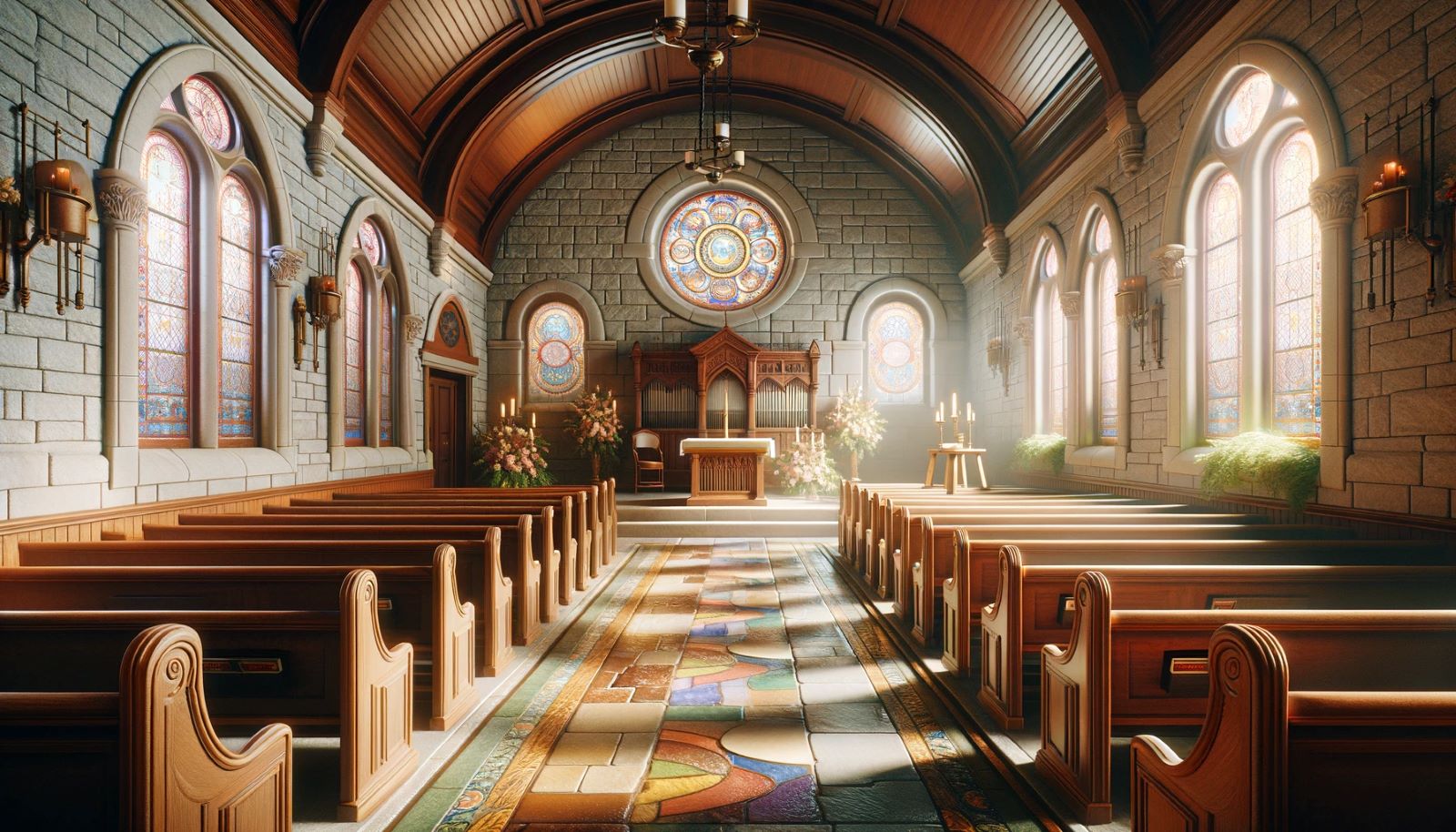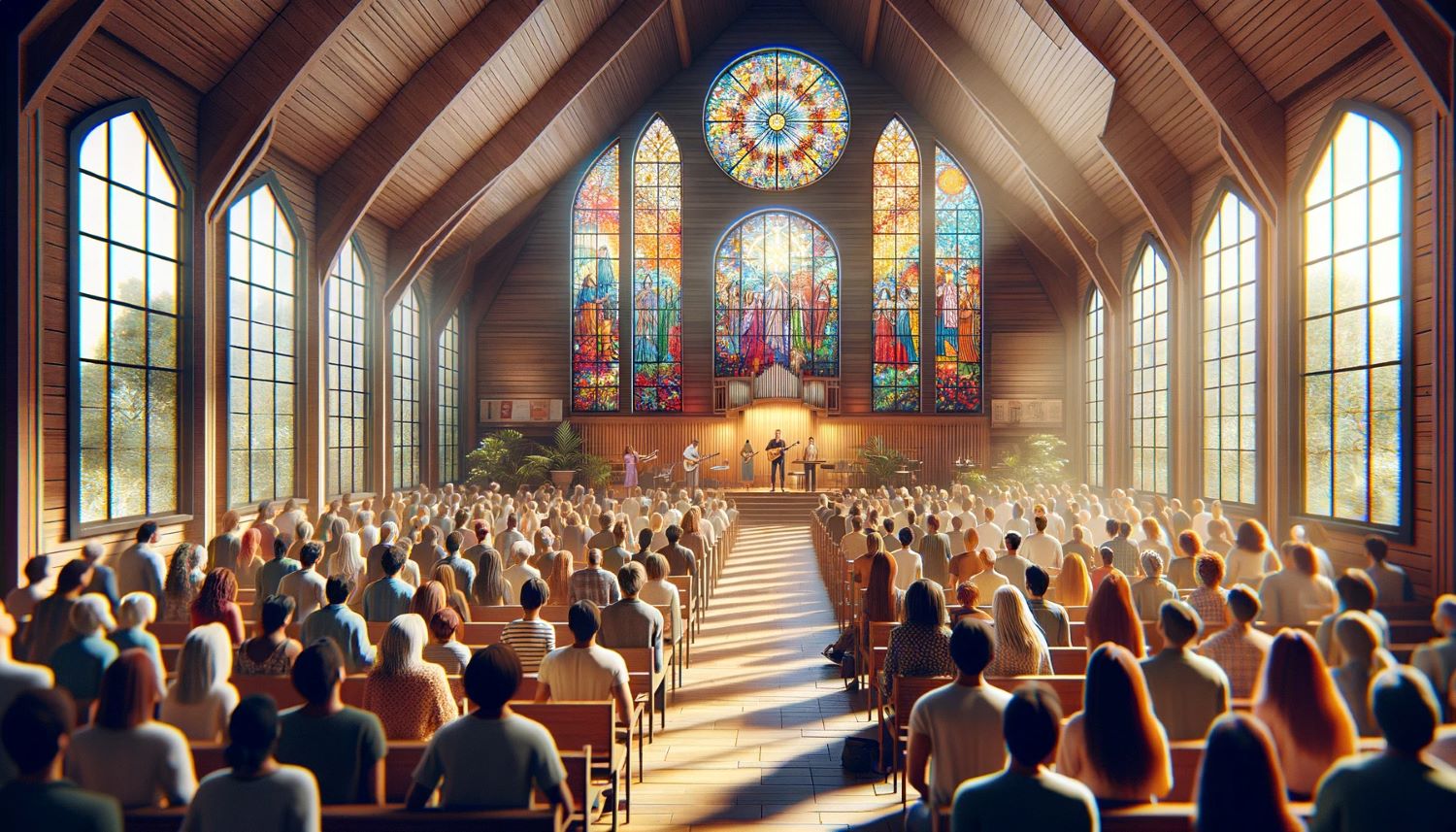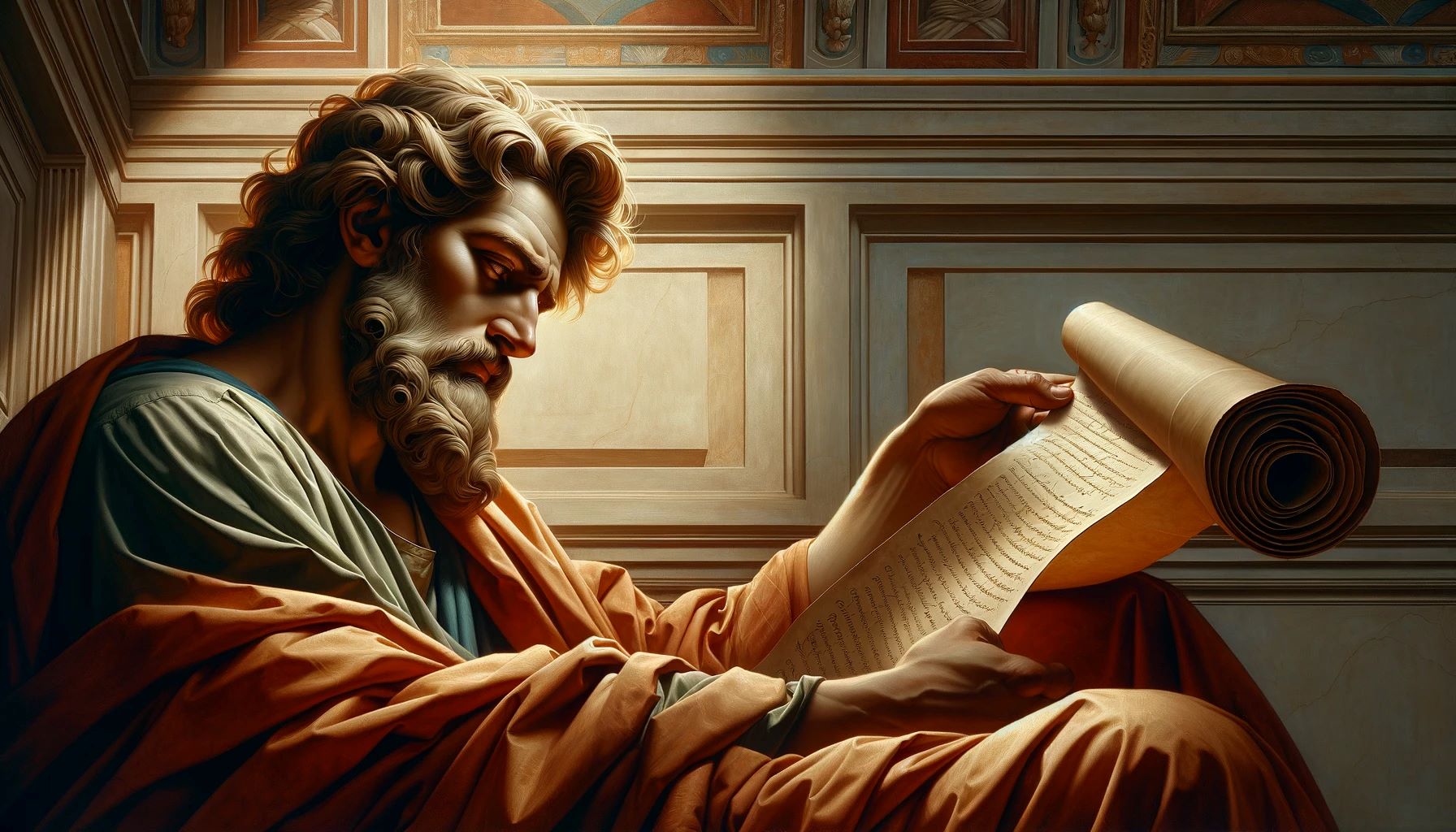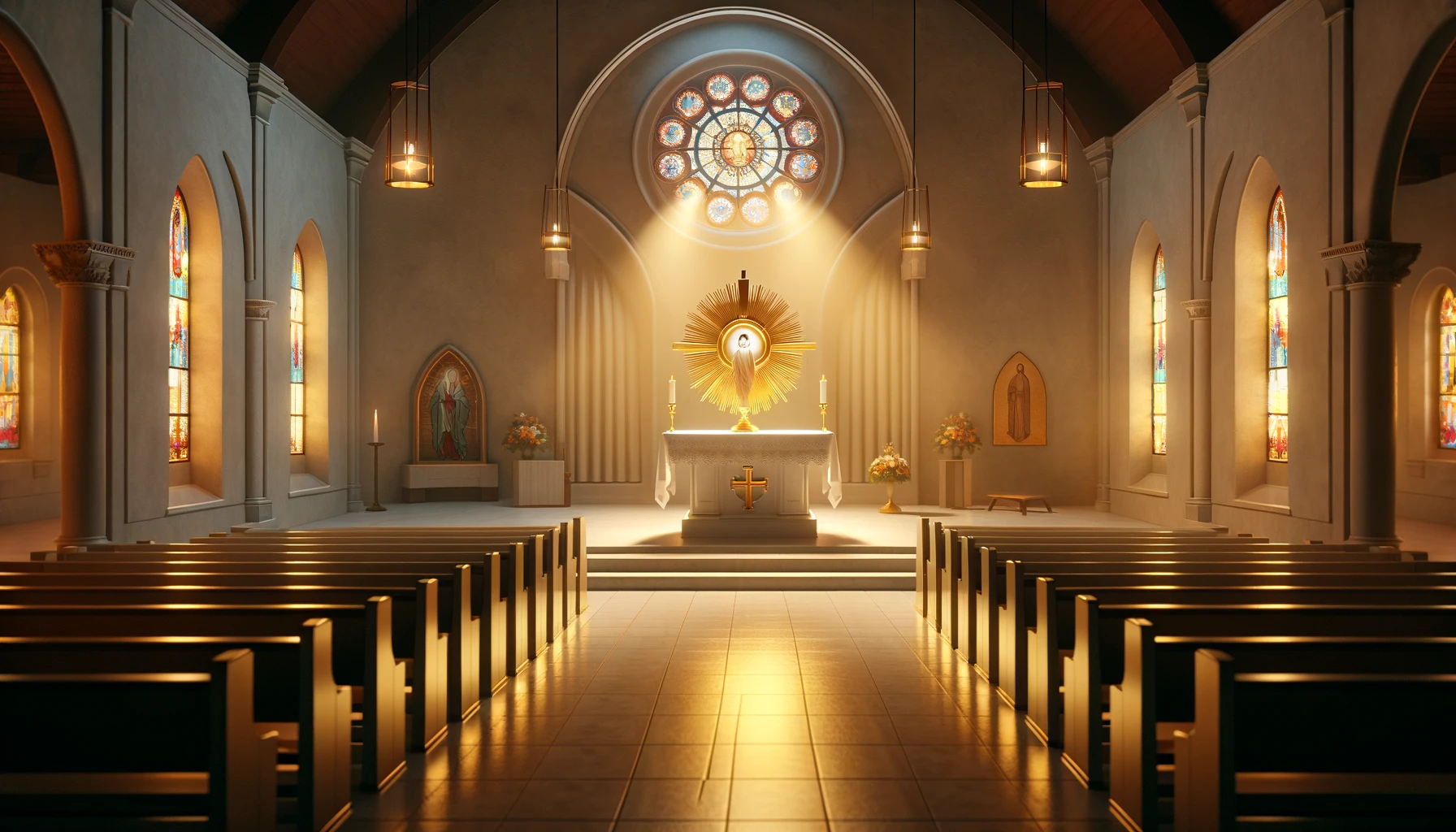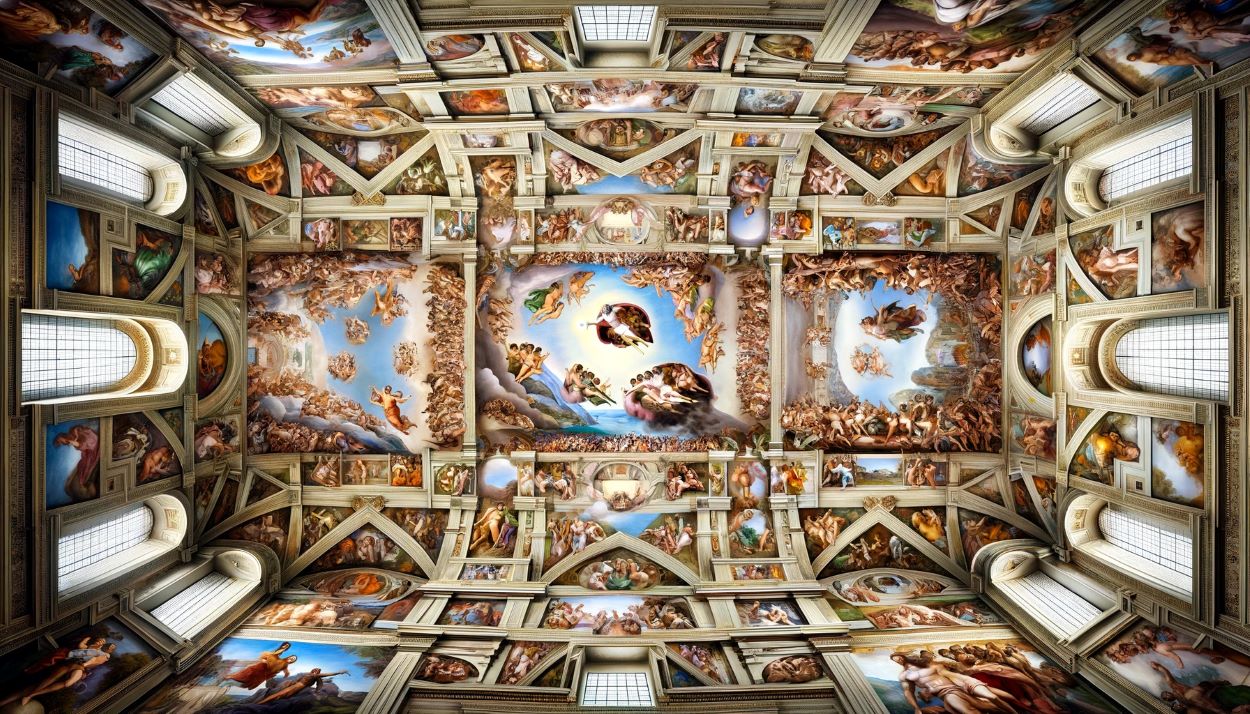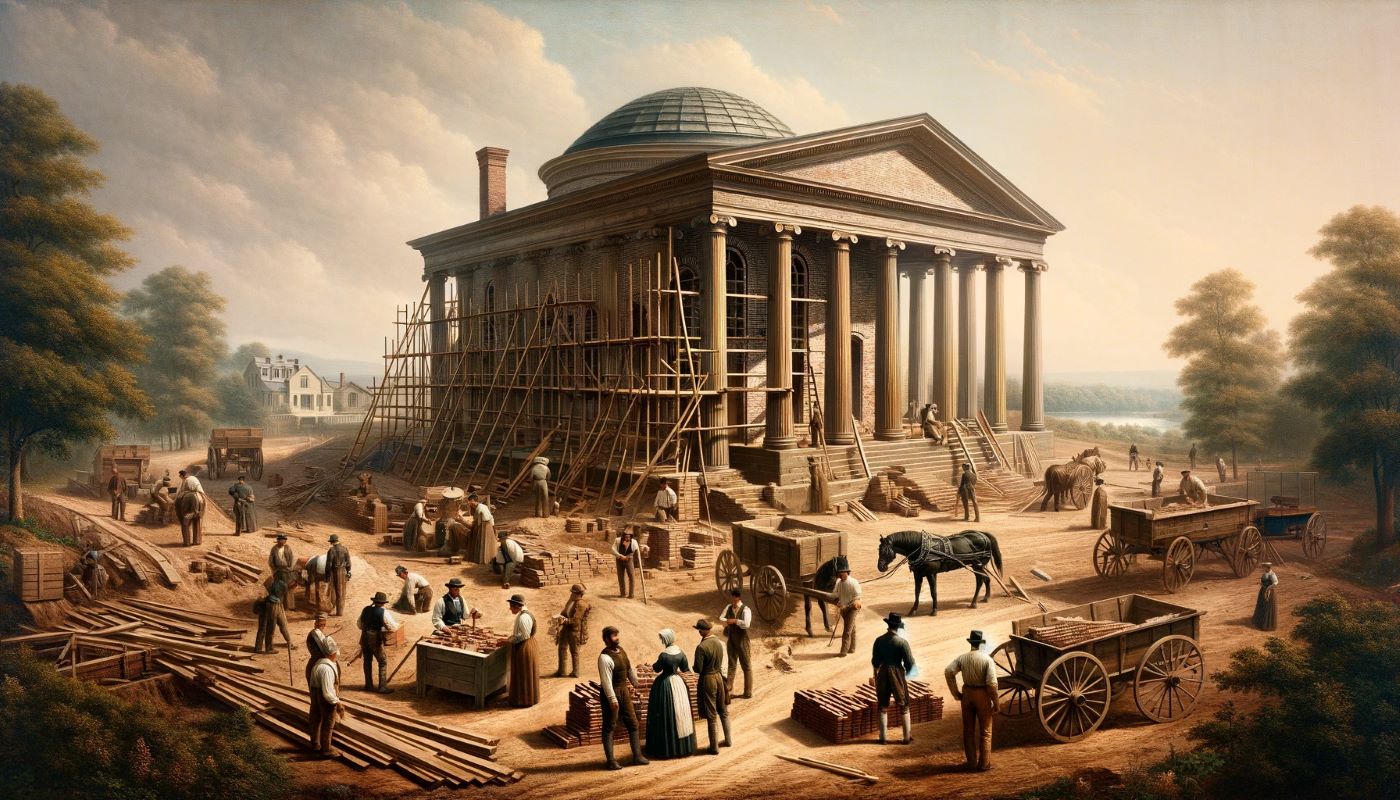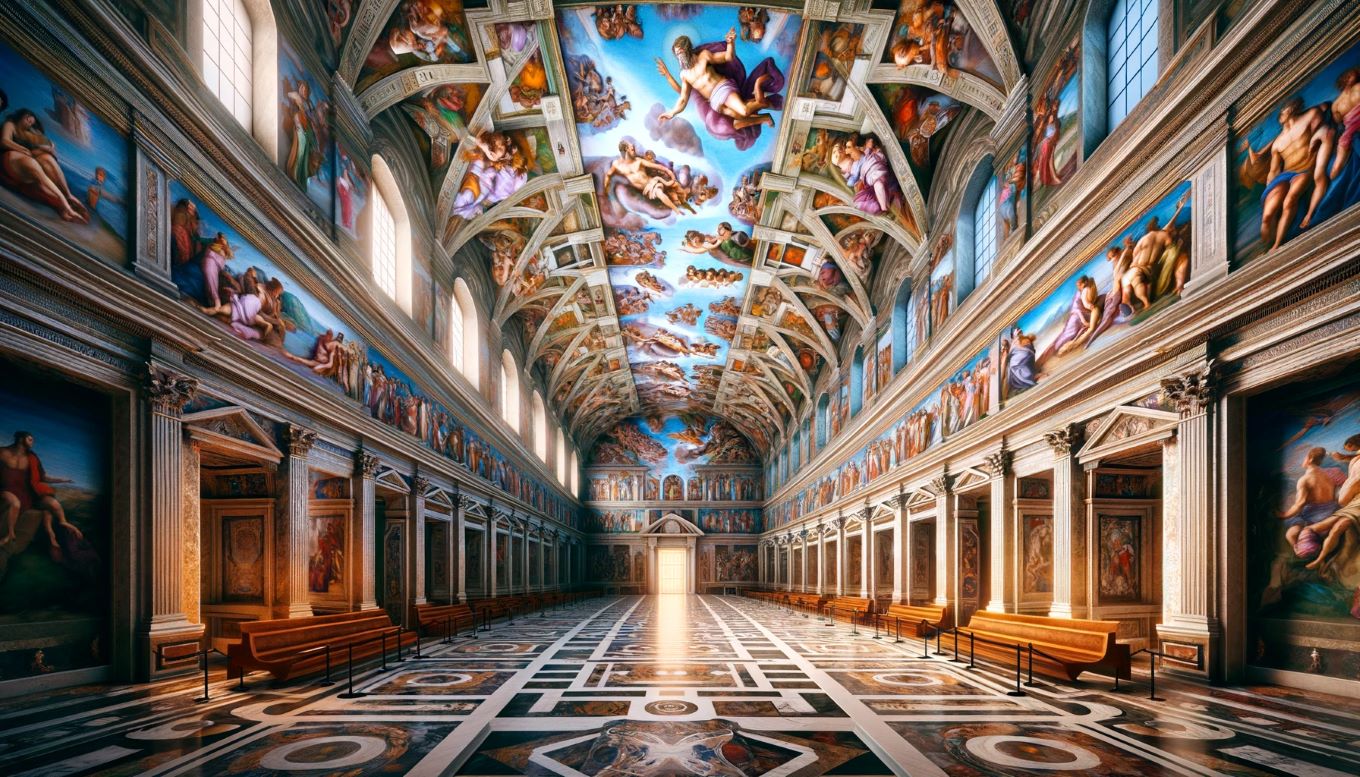Home>Arts and Culture>What Is The Duke Chapel Made Out Of
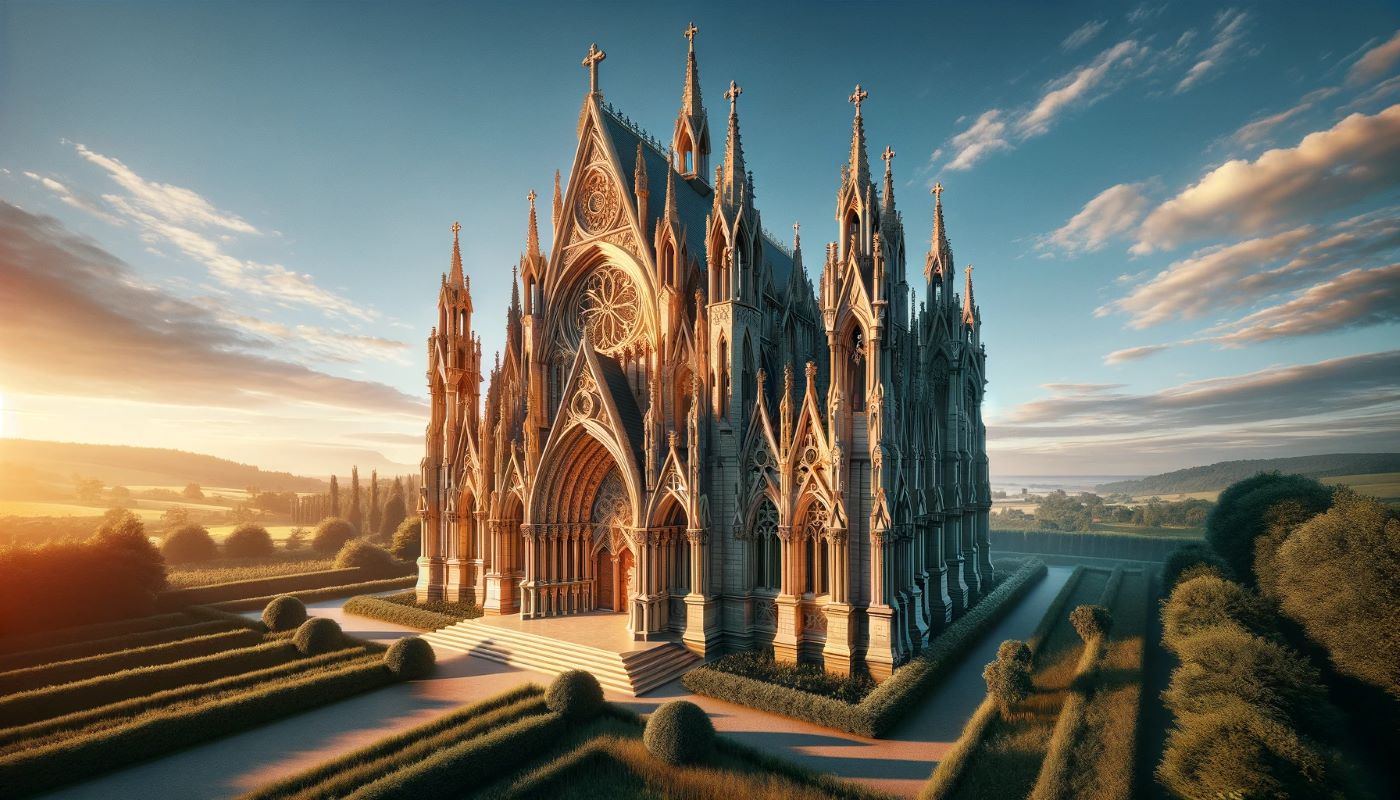

Arts and Culture
What Is The Duke Chapel Made Out Of
Published: March 4, 2024
Ericka Andersen, an editor at Christian.net, expertly merges digital strategy with content creation, focusing on faith and societal issues. Her communication skills enhance the platform's engaging narratives, fostering meaningful dialogue on belief's impact on society.
Discover the exquisite craftsmanship and history behind the Duke Chapel, constructed with stunning architectural elements and rich cultural significance. Uncover the artistic and cultural marvels of this iconic landmark.
(Many of the links in this article redirect to a specific reviewed product. Your purchase of these products through affiliate links helps to generate commission for Christian.net, at no extra cost. Learn more)
Table of Contents
Introduction
The Duke Chapel, located on the campus of Duke University in Durham, North Carolina, is a magnificent and iconic structure that has captured the hearts and minds of visitors for decades. This awe-inspiring place of worship and spiritual reflection stands as a testament to the university's commitment to faith, community, and the pursuit of knowledge. One of the most common questions asked about the Duke Chapel is, "What is the Duke Chapel made out of?" In this article, we will delve into the history, architecture, and materials used in the construction of this remarkable edifice, shedding light on the secrets of its enduring beauty and significance. So, let's embark on a journey to uncover the mysteries of the Duke Chapel and gain a deeper understanding of its construction and cultural importance.
Read more: How Old Is Duke Chapel
History of the Duke Chapel
- The Duke Chapel holds a rich and storied history that dates back to the early 20th century.
- The idea for the chapel was conceived by James B. Duke, a prominent tobacco and electric power industrialist, who sought to establish a university that would honor his father, Washington Duke.
- The chapel was envisioned as a centerpiece of the university, symbolizing the institution's commitment to spiritual growth and intellectual enlightenment.
- The renowned architect Julian Abele, the first African American graduate of the University of Pennsylvania's architecture program, was commissioned to design the chapel, and his vision brought the structure to life.
- Construction of the Duke Chapel began in 1930 and was completed in 1935, marking the culmination of years of meticulous planning and dedicated effort.
- Since its inception, the chapel has served as a place of worship, a venue for cultural events, and a source of inspiration for countless individuals who have crossed its threshold.
The history of the Duke Chapel is a testament to the enduring legacy of James B. Duke and the commitment of Duke University to fostering an environment where faith, knowledge, and community converge in harmony.
Architectural Features
The Duke Chapel stands as a masterpiece of Gothic architecture, boasting a stunning array of features that captivate the imagination and inspire a sense of wonder. From its soaring spires to its intricate carvings, every aspect of the chapel's design reflects a meticulous attention to detail and a profound reverence for the sacred. Here are some of the notable architectural features that make the Duke Chapel a marvel to behold:
-
Gothic Revival Style: The chapel is a prime example of the Gothic Revival style, characterized by its pointed arches, ribbed vaults, and flying buttresses. This architectural style, reminiscent of medieval European cathedrals, imparts a sense of timelessness and grandeur to the structure.
-
Spires and Towers: The chapel is adorned with majestic towers and spires that reach toward the heavens, symbolizing a spiritual aspiration and a connection to the divine. The central tower, known as the "Great Tower," rises to a height of 210 feet, commanding attention and reverence.
-
Stained Glass Windows: The interior of the chapel is adorned with a breathtaking collection of stained glass windows, depicting scenes from the Bible and the history of Christianity. These vibrant and luminous windows suffuse the space with a transcendent glow, inviting contemplation and introspection.
-
Carvings and Sculptures: The exterior of the chapel is adorned with a profusion of intricate carvings and sculptures, showcasing a wealth of religious symbolism and artistic expression. From gargoyles to angels, each sculpted figure contributes to the overall tapestry of spiritual significance and aesthetic beauty.
-
Pipe Organ: The chapel houses a magnificent pipe organ, renowned for its exquisite craftsmanship and resounding melodies. The organ's majestic pipes and resonant tones enrich the worship experience and elevate the musical offerings within the sacred space.
The architectural features of the Duke Chapel converge to create an environment that transcends the ordinary and invites visitors to immerse themselves in a realm of divine splendor and human creativity. Each element of the chapel's design serves as a testament to the enduring power of architectural excellence and spiritual inspiration.
Materials Used in Construction
The construction of the Duke Chapel involved the use of a diverse array of materials, each chosen for its durability, aesthetic appeal, and symbolic significance. The meticulous selection of these materials contributed to the enduring beauty and structural integrity of the chapel, ensuring that it would stand as a timeless testament to the values and aspirations of Duke University. Here are the primary materials used in the construction of the Duke Chapel:
Stone
The exterior of the Duke Chapel is primarily constructed from a type of stone known as "Hiram limestone," sourced from the Hiram, Ohio quarry. This limestone, renowned for its strength and distinctive warm hue, imbues the chapel with a sense of solidity and permanence. The skilled craftsmanship evident in the stone masonry reflects a deep respect for tradition and an unwavering commitment to architectural excellence.
Read more: What Is A Memorial Chapel
Wood
The interior of the chapel features an abundance of rich, hand-carved woodwork, including pews, paneling, and decorative elements. The use of oak and other fine woods adds a sense of warmth and elegance to the sacred space, inviting worshippers to experience a profound connection to the natural world and the beauty of craftsmanship.
Metal
The Duke Chapel incorporates various metal elements, such as bronze and iron, in its decorative features and structural components. The intricate metalwork, including railings, gates, and ornamental details, contributes to the chapel's visual splendor and serves as a testament to the skill of the artisans who contributed to its construction.
Glass
The chapel's resplendent stained glass windows are crafted from a kaleidoscopic array of glass, carefully selected for its vibrant colors and light-refracting properties. These windows, illuminated by the sun's rays, infuse the interior with a luminous, ethereal glow, inviting contemplation and spiritual reflection.
Roofing Materials
The roof of the Duke Chapel is adorned with slate shingles, chosen for their durability and distinctive appearance. The slate roofing not only provides protection from the elements but also adds a sense of timelessness and architectural refinement to the chapel's silhouette.
The meticulous selection and integration of these materials in the construction of the Duke Chapel have resulted in a structure that harmonizes with its natural surroundings while standing as a testament to human ingenuity and artistic expression. Each material contributes to the chapel's enduring allure and serves as a reminder of the profound significance of craftsmanship and attention to detail in the realm of architectural design.
Read more: What Is The Value Of The Sistine Chapel
Preservation and Maintenance
The Duke Chapel stands as a beacon of architectural magnificence and spiritual significance, and as such, it requires meticulous preservation and maintenance to ensure its continued splendor for future generations. The preservation and maintenance efforts for the Duke Chapel encompass a wide range of activities and initiatives aimed at safeguarding its structural integrity, historical value, and cultural importance. Here are the key aspects of the preservation and maintenance of the Duke Chapel:
Regular Inspections and Assessments
The preservation of the Duke Chapel begins with regular inspections and assessments conducted by skilled architects, engineers, and preservation experts. These professionals carefully examine every facet of the chapel, from its stone masonry to its stained glass windows, to identify any signs of wear, damage, or deterioration. Through these comprehensive inspections, potential issues can be addressed proactively, ensuring that the chapel remains a safe and enduring structure.
Restoration and Repair Projects
Over the years, the Duke Chapel has undergone several restoration and repair projects to address the effects of aging and environmental factors. Skilled craftsmen and artisans have been entrusted with the task of meticulously restoring damaged stone, wood, and metal elements, preserving the chapel's original beauty and craftsmanship. These restoration efforts are guided by a deep commitment to honoring the chapel's historical legacy while adapting to the evolving needs of preservation.
Environmental Stewardship
Preserving the Duke Chapel also involves environmental stewardship to mitigate the impact of natural elements on the structure. Measures such as waterproofing, climate control systems, and landscaping strategies are implemented to protect the chapel from moisture, temperature fluctuations, and other environmental stressors. By creating a stable and protective environment, the chapel's longevity and resilience are safeguarded.
Read more: What Is Depicted In The Sistine Chapel
Educational Outreach and Awareness
An essential aspect of preserving the Duke Chapel is fostering educational outreach and awareness about its historical and architectural significance. Through guided tours, educational programs, and public engagement initiatives, the university seeks to instill a sense of stewardship and appreciation for the chapel among students, faculty, and the broader community. By nurturing a deeper understanding of the chapel's value, its preservation becomes a shared responsibility and a source of pride for all who cherish it.
Ongoing Maintenance and Care
The ongoing maintenance and care of the Duke Chapel involve a dedicated team of professionals who tend to its daily upkeep and operational needs. From cleaning and conservation of the stained glass windows to the maintenance of the organ and interior furnishings, every aspect of the chapel receives the attention it requires to retain its timeless allure and functionality.
The preservation and maintenance of the Duke Chapel are guided by a profound reverence for its historical, cultural, and spiritual significance. Through a combination of expert oversight, community involvement, and a steadfast commitment to excellence, the chapel continues to stand as a testament to the enduring power of human creativity and devotion.
Significance of the Duke Chapel
The Duke Chapel holds profound significance as a spiritual, cultural, and architectural landmark, embodying the values and aspirations of Duke University and the broader community. Its enduring impact resonates on multiple levels, shaping the experiences of those who encounter its majestic presence and fostering a legacy that transcends the boundaries of time and tradition.
Spiritual Sanctuary
The Duke Chapel serves as a spiritual sanctuary, offering a place of worship, contemplation, and solace for individuals of diverse faith traditions. Within its hallowed walls, visitors find a refuge from the demands of daily life, a space for quiet reflection, and an opportunity to connect with the transcendent dimensions of the human experience. The chapel's sacred ambiance and inclusive ethos create an environment where spiritual seekers, believers, and seekers of all backgrounds can find common ground and nourish their inner lives.
Read more: What Is A Chapel Of Rest
Architectural Splendor
As a masterpiece of Gothic architecture, the Duke Chapel stands as a testament to human creativity, ingenuity, and the pursuit of aesthetic excellence. Its soaring spires, intricate carvings, and resplendent stained glass windows inspire awe and admiration, inviting visitors to marvel at the harmonious fusion of artistry and engineering. The chapel's architectural splendor transcends mere physical beauty, serving as a source of inspiration and wonder that elevates the human spirit and enriches the cultural landscape.
Educational and Cultural Hub
Beyond its role as a place of worship, the Duke Chapel serves as an educational and cultural hub, hosting a diverse array of events, concerts, and educational programs. It provides a venue for artistic expression, intellectual exploration, and community engagement, fostering a vibrant tapestry of cultural exchange and creative expression. Through its multifaceted contributions to the university's academic and cultural life, the chapel becomes a living testament to the enduring interplay between faith, knowledge, and the arts.
Symbol of Unity and Diversity
The Duke Chapel stands as a symbol of unity and diversity, embodying the university's commitment to fostering an inclusive and welcoming community. It serves as a gathering place where individuals from all walks of life come together to celebrate, mourn, and commemorate significant milestones. The chapel's open doors and inclusive ethos reflect a spirit of hospitality and understanding, transcending differences and fostering a sense of shared humanity among all who enter its sacred precincts.
Enduring Legacy
The Duke Chapel's enduring legacy extends far beyond its physical presence, leaving an indelible mark on the hearts and minds of all who have been touched by its grace. It stands as a testament to the vision of its founders, the dedication of its builders, and the ongoing commitment of the university and its community to preserve and cherish this architectural treasure. Its legacy continues to unfold, inspiring future generations to embrace the values of faith, knowledge, and service, and to recognize the transformative power of architecture in shaping the human experience.
In essence, the Duke Chapel's significance transcends the boundaries of religion, culture, and time, weaving a tapestry of meaning and inspiration that enriches the lives of all who encounter its timeless grandeur. It stands as a living testament to the enduring power of faith, art, and community, inviting all to partake in its legacy and find resonance with its profound significance.
